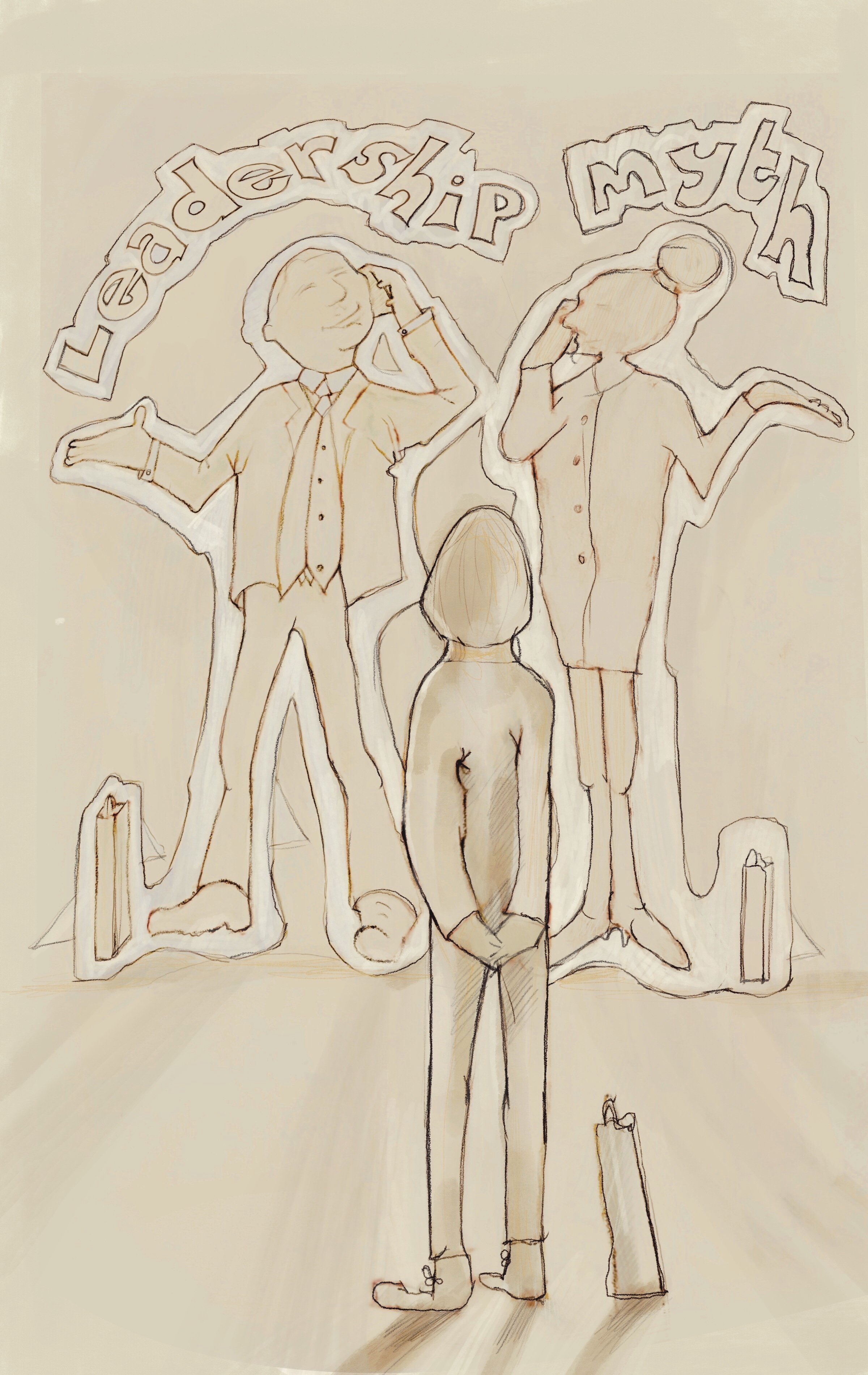Debunking the Product Leadership Myth
Don’t let these 3 leadership limiting beliefs stand in your way
Illustration by artinker.com for Kate Leto
The concept of leadership — similar to Product — is widely discussed and popularised these days in countless blogs, podcasts, articles, books, videos, you name it. But, based on many of my coaching conversations, I’m left with the feeling that the talk about leadership is actually leaving those new to the role more confused than ever before.
In fact, the questions “What does it mean to be a Product leader?” and “What does Product leadership look like?” underpin a lot of my coaching sessions. But often it’s my clients who are asking these questions instead of me. And even when I am the one to initiate these conversations, some clients genuinely struggle to come up with answers. In a recent coaching session, I asked a Senior Director of Product what leadership means to him. His very honest and heartfelt response: “I don’t know. That’s why I’m here.”
What’s even more interesting is that this disconnect with the concept of leadership has left a lot of space for many to revert to a very traditional view of it. When it comes to describing the role of leader, some of the common themes I’ve heard from clients include:
Real leaders look, act, dress, and talk a certain way.
To be a leader, you have to have a certain type of degree from a certain type of school.
As a leader, you need to make all the tough decisions and have all the answers.
These statements are great examples of limiting beliefs. While not actually true, they feel very real and as a result, they hold us back from doing certain things, like going for a promotion or stepping into a leadership role. They are often validated by the actions, behaviours, and pedigree of those leaders that have come before us and have, consciously or not, become role models.
As I talk about more below, one of the first things we do when challenging limiting beliefs is asking ourselves a simple question: “Is it true?” While this is intended to be a question for personal reflection, sometimes a first step is to look at wider research and evidence that proves or debunks the idea.
Here’s some research, inspiration, and personal experiments that you can put in place to help you do just that:
Limiting belief: Real leaders look, act, dress, and talk a certain way.
Reality: A study that’s included in my book, Hiring Product Managers: Using Product EQ to go beyond culture and skills drives home the importance of diversity in leadership, breaking the myth that real leaders look, act, and even think a certain way.
It’s a Harvard Business Review study, “How Diversity Can Drive Innovation,” that found that companies with more diversity in leadership out-innovate and outperform those with less diversity in lead roles.
The study’s authors, Sylvia Ann Hewlett, Melinda Marshall, and Laura Sherbin, defined diversity in two ways:
Inherent diversity — traits that you’re born with like gender, ethnicity, and sexual orientation
Acquired diversity — traits you gain from experiences like working in another country, which can give you an appreciation of another culture.
Their research showed that organisations with greater levels of both inherent and acquired diversity were 45 percent more likely to report an increase in market share over the previous year and were 70 percent more likely to capture a new market. Why? Organisations with inherent and acquired diversity encourage divergent thinking, they desire debates that push and pull apart how and what decisions get made, and they create opportunities for curiosity and innovative thinking.
Experiment: While research like this study tells us that diversity across an organisation — and particularly its leaders — is directly correlated to organisational performance, there’s no doubt that our industry and many others need to do a lot of work to make diversity the default. And while organisations look to diversity and inclusion programs to address this issue from a company-wide perspective, there’s work that we can do to challenge our own limiting beliefs about what you should look like or act like in order to be a real leader.
As I talked about in my article about imposter phenomenon and limiting beliefs, start by reflecting on these questions:
What is the story that I’m telling myself?
Is it true? What evidence or facts do I have to support it?
How is this belief serving me?
What would an alternative belief be?
How could I test this alternative belief? What small thing could I do to try this out?
With practice, you’ll be able to start to build awareness of when these limiting beliefs surface in real time, and build a responsive reaction to replace the old belief of “I can’t become a leader because I don’t look a certain way” with “My age, gender, and ethnicity really don’t matter. I already am a leader.”
If you’re interested in learning more about the questions above and how to break down limiting beliefs, I highly recommend Byron Katie’s book on “The Work.”
Limiting Belief: Real leaders have a certain education or degree from a certain type of school.
Reality: My personal background debunks this myth. While I’ve been considered a Product leader and executive for many years now, I don’t have an MBA, a degree in computer science, or anything that might be considered directly related to what I’ve done for the past 25 years. (By the way, I was a history major and political science minor in college).
As more organisations better understand the actual foundational skills that help a person excel, they too are finding that it actually has very little to do with the type of degree you have or where you went to school.
Google did a deep dive into their hiring practices and promotion data in a study called Project Oxygen that Valerie Strauss of the Washington Post talked about in her article “The surprising thing Google learned about its employees — and what it means for today’s students.”
Since its inception in 1998, hiring at Google had been targeted to those with computer science degrees from top institutions — similar to the education founders Sergey Brin and Larry Page had. The outcome of the 2013 study found that the most important qualities of top employees had nothing to do with STEM knowledge:
“The seven top characteristics of success at Google are all soft skills: being a good coach; communicating and listening well; possessing insights into others (including others’ different values and points of view); having empathy toward and being supportive of one’s colleagues; being a good critical thinker and problem solver; and being able to make connections across complex ideas.”
While organisations like Google can start to share this type of research from a high level, each of us individually can start to put it into action with just a few minutes of self-reflection on our own leadership roles.
Experiment: This exercise offers an opportunity for structured self-reflection on your leadership role by using the Role Canvas. Take a few minutes to complete it on your own and answer the questions:
What is the purpose of your role?
What are the goals or outcomes you’re working towards?
What type of human skills do you need to achieve these outcomes?
What type of technical skills do you need to achieve these outcomes?
You may even want to change the second question to: “What are the challenges you’re facing in the role?”
Either way, I bet you’ll find that in your leadership role, what is going to make the biggest impact in achieving your goals/outcomes or overcoming your challenges are human skills. Things like self-awareness to help with decision-making, communication skills to build better relationships with stakeholders, and even conflict resolution skills to get through the tensions that naturally exist in product.
Limiting Belief: Real leaders make all of the tough decisions and have the answers to everything.
Reality: There’s a time and place for leaders to do just this — make tough decisions and even adopt what Daniel Goleman calls the “coercive style” of leadership. Goleman — who popularised the concept of emotional intelligence with his book Emotional Intelligence: Why it can matter more than IQ — describes this type of leadership as a “do what I say” approach.
However, Goleman points out in his case study “Leadership that Gets Results,” in most situations, coercive leadership restricts the organisation’s flexibility and dampens employees’ motivation. He goes on to say that leadership styles that resonate with team members and motivate are more open, inclusive, and curious.
Leaders who adopt a coaching mindset and ask questions instead of behaving like they have all the answers create work climates with higher levels of engagement, which directly links to greater retention.
As with any established behavioural pattern, it will take time and effort to shift from being the leader who expects people to “do what I say” into someone who asks “what do you think?” The experiment below talks about how one organisation has started to address the challenge.
Experiment: If you were to track your approach to working with others on the spectrum of directive with a “Do as I say” mentality vs. curiosity, “What do you think?” where would you land?
If you’re closer to the “do as I say” side, take a note from a leadership team at Procter & Gamble. The organisation had coaches work with C-suite executives to identify how many statements they made versus how many questions they asked. They ended up deciding there were four questions they should always ask:
What have you learned?
How did you learn it?
What else do you need to learn?
How can I help?
By focusing on these questions, you as a leader can move away from feeling like you have to have all the answers to helping others realise that they had the answers all along, and you’re there to help.
I really hope the combination of research and experiments at least calls into question some of the myths that many of us are holding about leadership, be it in product or beyond. As Erin Hatzikostas says in her book, You Do You(ish):
“We should spend less time shadowing the old rules and more time shaping the new ones.”
As always, if I can help you explore your limiting beliefs and rules around leadership through Leadership Coaching, please get in touch!



